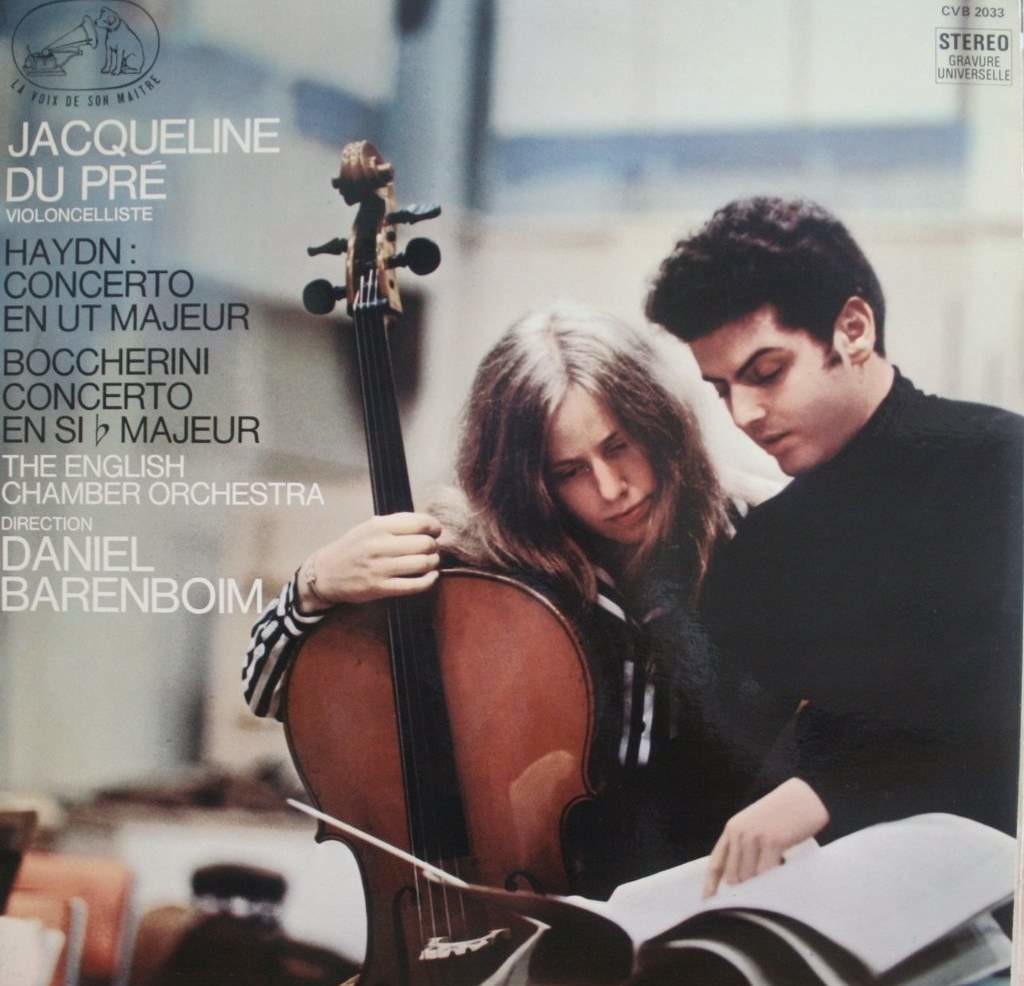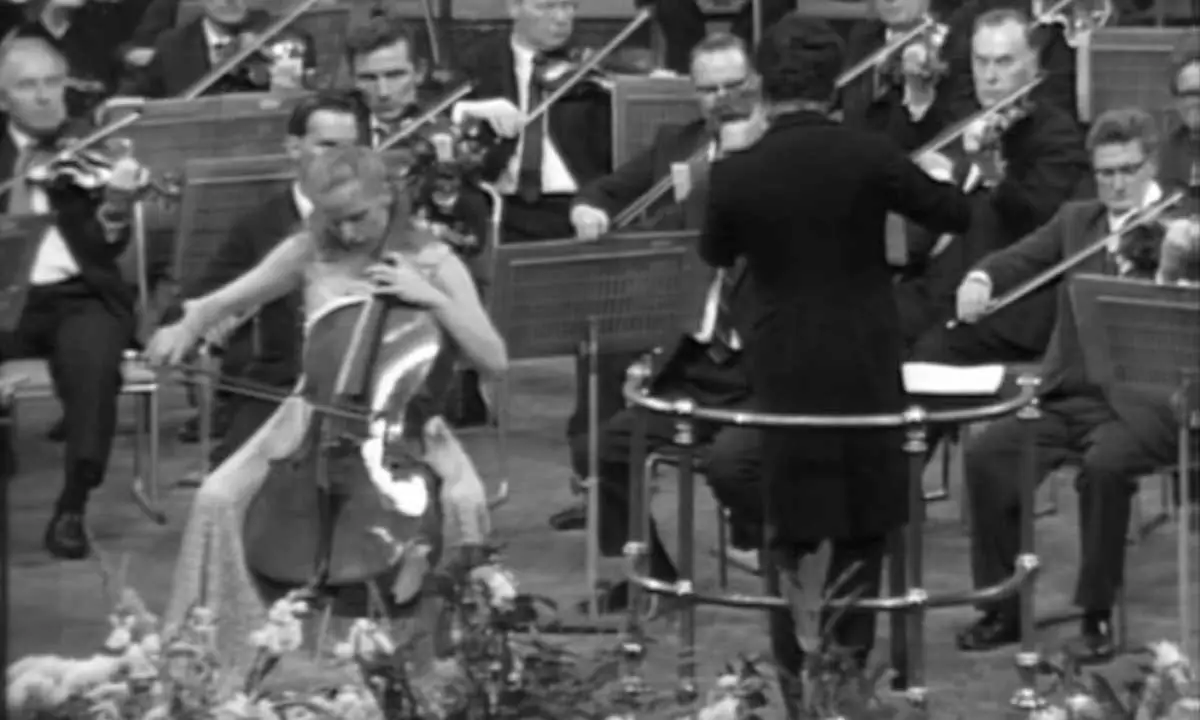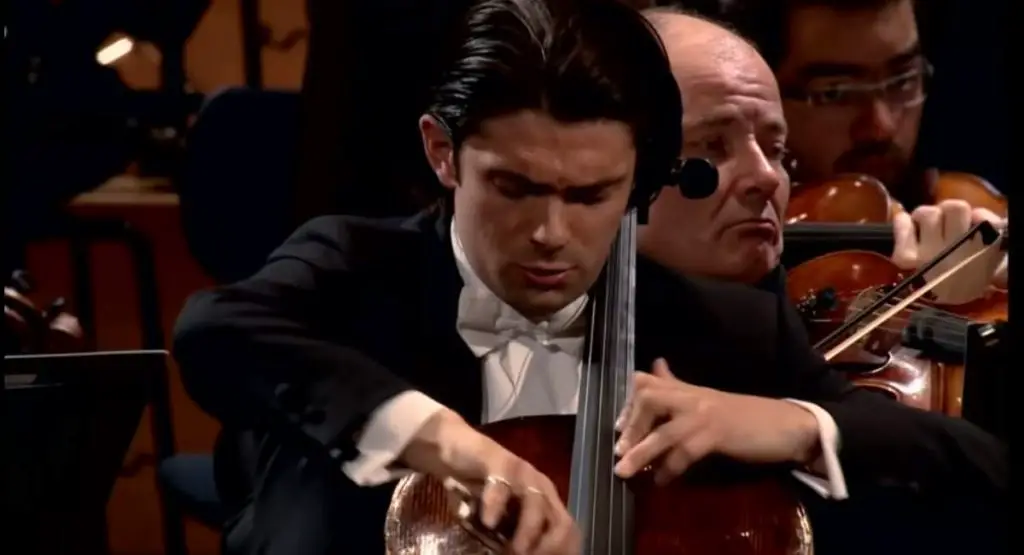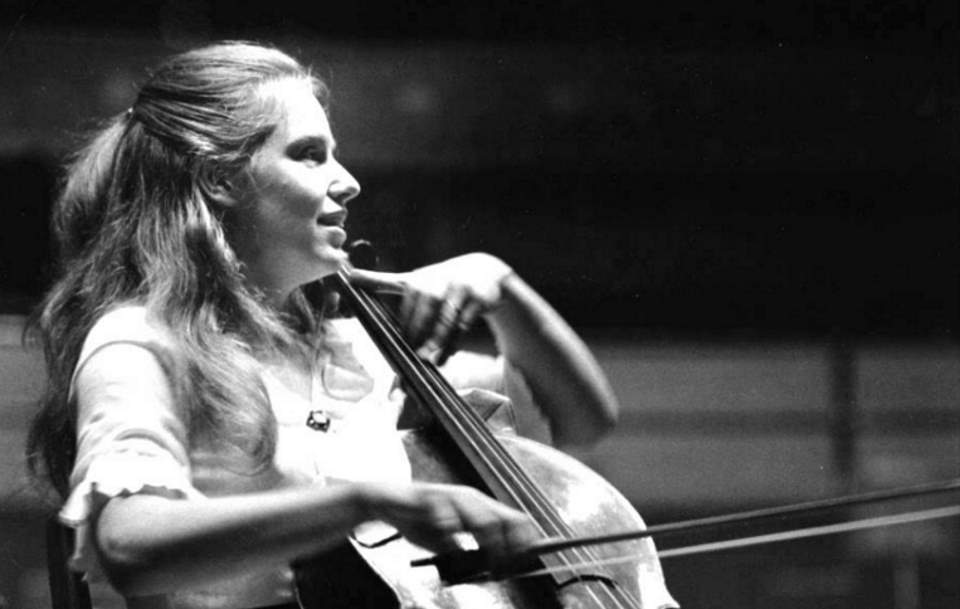Accompanied by the London Symphony Orchestra, regarded as one of the most talented cellists of the second half of the twentieth century, Jacqueline du Pré performs Antonín Dvořák’s Cello Concerto in B minor, Op. 104, B. 191. Conductor: Daniel Barenboim. A recently re-discovered recording of a concert held in tribute to the people of Czechoslovakia days after the Soviet Union invaded. Filmed live at the Royal Albert Hall in September 1968.
Antonín Dvořák’s Cello Concerto
The concerto was written in 1894 for the composer’s friend, the Czech cellist Hanuš Wihan (5 June 1855 – 1 May 1920), but was premiered in London on March 19, 1896, by the English cellist Leo Stern (5 April 1862 – 10 September 1904).
Dvořák’s Cello Concerto is scored for a full romantic orchestra (with the exception of a 4th horn), containing two flutes (second doubling piccolo), two oboes, two clarinets, two bassoons, three horns, two trumpets, three trombones, tuba, timpani, triangle (last movement only), and strings, and is in the standard three-movement concerto format:
- Allegro (B minor then B major). The first movement starts softly, with the clarinets introducing the theme. The full orchestra later plays the theme in a grandioso manner, leading to a horn solo which introduces the secondary, lyrical theme. The first theme is played throughout the movement and during the last part of the third movement, giving the concerto a cyclic structure. The solo cello begins with a quasi improvisando section stating the theme in B major followed by triple-stopped chords. The cello then plays the theme again in E major. This concerto requires a lot of technical ability, especially in the coda, where the cello plays octaves and many double stops. After the resolution by the solo cello, there is a modulation in which the winds play an E-flat minor chord, changing the key. The solo cello ends with trills on a high B. The movement ends tutti with the restatement of the first theme marked grandioso and fortissimo.
- Adagio, ma non troppo (G major). Following this opening essay is the lengthy Adagio, a lyrical movement that features a cadenza-like section that is accompanied mainly by flutes. The cello plays double stops accompanied by left-hand pizzicato on open strings. The movement ends with the cello playing harmonics very quietly.
- Finale: Allegro moderato – Andante – Allegro vivo (B minor then B major). The finale of Dvořák’s Cello Concerto is formally a rondo. It opens with the horn playing the main theme quietly. A gradual crescendo leads into a dramatic woodwinds and strings section. The solo cello enters by playing the modified main theme loudly which is marked risoluto. The orchestra plays the newly modified theme again. Then the cello enters with a melody played on the A string played with thirty-second notes on the D string. This fast section leads into a section marked poco meno mosso, dolce, and piano. A crescendo and accelerando lead into a fast arpeggio played in sixteenth-note triplets. A fast scale leads into a loud tutti section presenting new material. The cello enters and a gradual decrescendo to another restatement of the theme marked piano. This is followed by a contrasting, loud restatement of the theme played by woodwinds accompanied by strings and brass. This is followed by a moderato section in C major and eventually meno mosso which slowly modulates from A major to C♯ major to B♭ major and finally goes to the original tempo in B major. This is followed by another quiet and slow section which uses material from the first and second movements. The concerto ends allegro vivo presented by the full orchestra.
Jacqueline du Pré

Jacqueline Mary du Pré, OBE (26 January 1945 – 19 October 1987) was an English cellist. At a young age, she achieved enduring mainstream popularity unusual for a classical performer.
Despite her short career, she is regarded as one of the most talented cellists of the second half of the twentieth century. Unfortunately, her career was cut short by multiple sclerosis, which forced her to stop performing at the age of 28. She battled the illness for many years before her death.
She was married to the famous pianist and composer Daniel Barenboim until her premature death.
Sources
- Cello Concerto (Dvořák) on Wikipedia
- Pavarotti sings Pourquoi me réveiller [Massenet] at the Central Park in 1993 - April 23, 2024
- Elgar: Serenade for Strings [Concertgebouw Chamber Orchestra] - April 19, 2024
- Mozart: Serenade No. 10 “Gran Partita” [MET Orchestra Chamber Ensemble] - April 18, 2024

![Dvořák: Cello Concerto [Ella van Poucke]](https://cdn-0.andantemoderato.com/wp-content/uploads/2023/03/Dvorak-Cello-Concerto-Ella-van-Poucke-1024x576.jpg)

